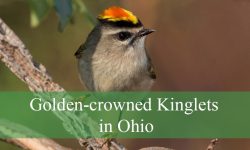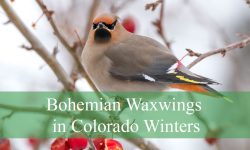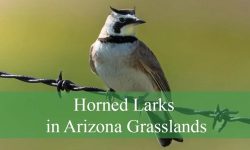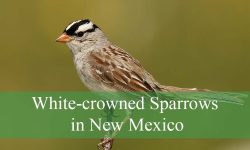Across Pennsylvania’s woodlands, open fields, and small towns, black vultures appear frequently yet remain one of the state’s most misunderstood birds. Their dark plumage, bare gray head, and imposing silhouettes often create an intimidating first impression, yet their behavior is far more complex than most people realize. These birds play crucial ecological roles, maintain tight family bonds, and display intelligence that surprises many observers.
Although they share space with the more familiar turkey vulture, black vultures carve out a distinct niche across Pennsylvania. They thrive in varied environments—from rolling agricultural valleys to forested ridges and small-town outskirts—revealing sophisticated social systems and survival strategies that few residents ever see.
This article uncovers the hidden facts behind their daily lives, winter endurance, feeding habits, group behavior, and importance to Pennsylvania’s ecosystems.
Understanding Black Vultures in Pennsylvania
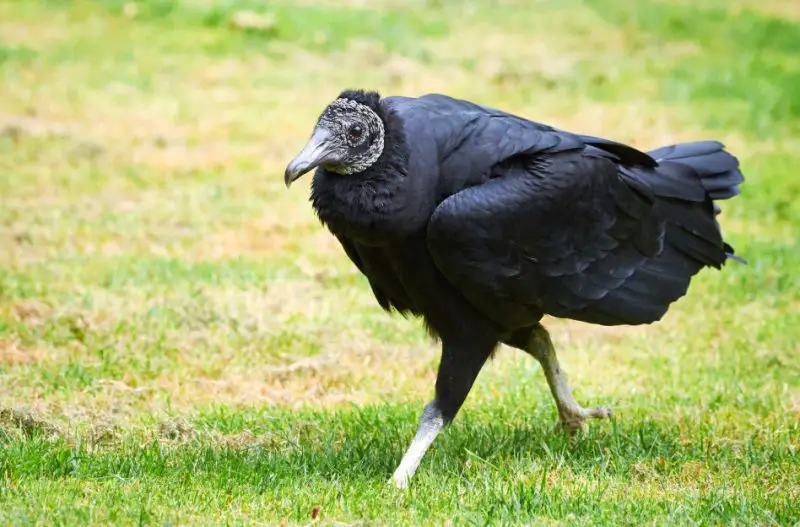
What Black Vultures Really Are
Black vultures are striking, medium-to-large scavenging birds whose physical design reveals exactly how they survive and thrive across Pennsylvania. Their bodies are cloaked in almost entirely black plumage—dark feathers that absorb heat during cool mornings, allowing them to warm up quickly before taking flight. When seen overhead, their short, squared tail and distinct silver patches on the wingtips create a unique silhouette that sets them apart from any other soaring bird in the region.
Their head, gray and wrinkled like weathered stone, often looks intimidating but is one of their most important adaptations. The bare skin prevents decaying matter from sticking to feathers and reduces bacterial buildup after they feed on carrion. Airflow and sunlight naturally sterilize the skin, ensuring cleanliness despite their diet.
Black vultures are not predators in the traditional sense. While they possess sharp bills and strong talons, these features are specialized for tearing carrion rather than hunting live animals. Their digestive system stands among the most powerful in the bird world, capable of neutralizing anthrax, botulism, and other pathogens that would kill most animals. By consuming carcasses quickly and safely, they prevent disease from spreading across both wild and agricultural landscapes.
One of the most underestimated qualities of black vultures is their intelligence. They possess excellent memory, recognizing individual flock members and remembering reliable feeding sites. They navigate the environment through a blend of visual cues, learned routes, and social communication. Unlike many raptors that lead solitary lives, black vultures maintain long-lasting family bonds. Parents often stay with their offspring well into the following breeding season, teaching them how to locate safe roosts and follow thermal currents during soaring. This combination of intelligence, loyalty, and specialized anatomy has allowed them to expand steadily throughout Pennsylvania.
Why Pennsylvania Provides an Ideal Environment
Pennsylvania offers an impressive blend of habitats that favor black vultures. Rolling farmland, wooded ridges, open pastures, and wide river valleys create a landscape where food is plentiful and easy to locate. Roadways and rural highways unintentionally supply constant scavenging opportunities, especially in heavily forested counties where deer-vehicle collisions occur frequently. Agricultural regions, with livestock operations and seasonal calving, further enhance the availability of carcasses and afterbirth—two primary food sources for vultures.
Historically, black vultures were far more common in the southern United States. Pennsylvania’s harsher winters once prevented the species from maintaining stable northern populations. However, milder winters over recent decades have expanded their range dramatically. Today, southeastern and south-central Pennsylvania support some of the largest year-round vulture communities in the state.
The state’s varied topography benefits them as well. Appalachian ridges generate strong thermal currents that black vultures rely on for effortless soaring. Powerline corridors, clearings, and open ridgelines provide consistent lift, allowing vultures to conserve energy while scanning vast areas for food. The Susquehanna River Valley, in particular, offers warm microclimates, uninterrupted flight routes, and abundant carcasses along floodplains and agricultural edges.
Together, these environmental factors create a nearly perfect landscape for black vultures—rich in food, full of thermal updrafts, and mild enough in winter to support large communal roosts.
Where They Occur Across the State
Black vultures have now spread across nearly all of Pennsylvania, though their distribution varies depending on season, habitat, and climate.
Southeastern counties—York, Lancaster, Chester, and Berks—remain the core of the state’s black vulture population. The mix of agriculture, open valleys, and wooded river corridors creates prime conditions for roosting, soaring, and scavenging. These regions also host some of the oldest and most stable family groups.
South-central Pennsylvania, including Harrisburg, Gettysburg, and Chambersburg, also supports robust populations. The area’s farmland, historic stone barns, and expansive views make it one of the state’s most vulture-dense regions.
In western Pennsylvania, black vultures have become increasingly common. Suburbs around Pittsburgh now report regular sightings, especially near industrial areas and wooded ridges where roosting structures are abundant.
Northeastern and north-central Pennsylvania host smaller populations, but numbers are rising as winters become milder. These regions offer rugged terrain, long river valleys, and forest clearings ideal for soaring.
Daily distribution often changes. Vultures will move between roosts depending on temperature, wind patterns, and carcass availability. Mountain ridges, utility corridors, and river valleys serve as highways through which vultures move fluidly across large areas of the state.
Hidden Behaviors Most People Never See
Their Social Bonds Are Extremely Strong
Black vultures display some of the strongest family cohesion found among birds. Breeding pairs stay together for years, returning to the same roosts and feeding territories. Offspring frequently accompany parents for many months after fledging, learning how to find thermals, locate carcasses, and interpret subtle group signals.
Communication within these family units is sophisticated. Vultures use posture, wing positioning, and quiet grunts to signal intentions. These interactions determine feeding order, roost perches, and flight timing. Family groups cooperate during feeding, often defending carcasses from other scavengers or waiting strategically for access. This level of coordination makes them far more advanced socially than many people expect.
They Rely on Vision—Not Smell—to Find Food
Black vultures possess excellent eyesight and rely on sharp visual tracking to locate carcasses. They soar at high elevations where they can scan a wide landscape with minimal effort. When another scavenger—often a turkey vulture or crow—moves toward a carcass, black vultures take notice immediately.
Because turkey vultures have a highly developed sense of smell, black vultures often follow them intentionally. This behavior, known as “social tracking,” allows black vultures to locate food quickly without relying on scent. Their ability to read the behavior of other birds plays a key role in their daily survival.
Their Roosting Habits Are Surprisingly Complex
Every evening, black vultures return to communal roosts that may contain dozens or even hundreds of individuals. These roosts form the true backbone of their social structure. Roost locations vary widely—from tall dead trees and wooded hillsides to abandoned barns, communication towers, and occasionally residential rooftops.
Roosts function as gathering points where birds warm themselves, preen their feathers, and interact with family groups. At sunrise, vultures spread their wings toward the sun, warming their bodies before taking to the air. Throughout winter, roosts can shift in location depending on wind protection, food supply, and disturbances. Some roosts are used for decades, while others form temporarily during cold spells.
Anatomy Built for Scavenging and Soaring
Featherless Heads that Prevent Infection
The bare gray head of a black vulture may seem off-putting, but it serves a crucial purpose. When vultures feed, they reach deep into carcasses where bacteria thrive. Feathers would trap blood, tissue, and harmful microbes, creating infection risks. The vulture’s naked head eliminates this problem entirely.
Sunlight, wind, and dry air sterilize the exposed skin naturally after feeding, making their appearance a perfect example of functional evolution.
Broad Wings Designed for Efficient Flight
With wingspans reaching up to five feet, black vultures use broad, paddle-shaped wings that maximize lift while minimizing effort. They rarely flap their wings compared to other birds, instead gliding on rising air currents for long distances.
Those distinctive silver wing patches are not just decorative—they help other vultures identify individuals in the sky and coordinate group direction during soaring.
Powerful Stomachs that Neutralize Bacteria
Few digestive systems are more efficient than those of black vultures. Their stomach acid is extremely strong, breaking down tissues and neutralizing pathogens that would be deadly to most birds and mammals.
This adaptation allows them to consume food sources that other animals cannot safely touch. As a result, they serve as nature’s clean-up crew, eliminating carcasses before disease can spread across the landscape.
Feeding Habits Across Pennsylvania
Diet Based on Carrion
Black vultures feed on a wide variety of dead animals, from white-tailed deer struck by vehicles to small mammals, roadkill birds, and livestock afterbirth. Their presence near agricultural fields is no accident—farmland often provides consistent sources of carrion, especially during calving season.
By removing carcasses rapidly, they help reduce disease transmission and maintain ecological balance.
Cooperative Feeding Behavior
Black vultures feed in a structured, coordinated manner. Rather than scattering around a carcass, they approach in groups and often take turns accessing specific areas. Dominance is expressed through subtle body cues, but family groups frequently share food without significant aggression.
This cooperative behavior contrasts strongly with many raptors that defend carcasses fiercely.
Opportunistic Foraging
Though scavenging is their primary feeding method, black vultures occasionally supplement their diet by taking advantage of weakened or newborn animals. This behavior is uncommon but can occur near livestock, contributing to their controversial reputation among farmers.
Most of their diet, however, consists of carrion discovered through visual tracking rather than predation.
Nesting and Breeding Behavior in Pennsylvania
Simple Ground-Based Nests
Unlike many birds that construct elaborate nests, black vultures select natural cavities and sheltered areas for laying eggs. Caves, hollow logs, old sheds, and unused barns provide secure, quiet spaces for raising young.
The simplicity of their nesting strategy reflects their reliance on concealment rather than construction.
Strong Family Involvement
Both parents participate actively in incubation and chick care. Young vultures remain dependent for extended periods, learning from adults how to navigate the landscape and integrate into group dynamics. Family ties often persist into the next breeding season, strengthening the social fabric of local populations.
Black Vultures Across Pennsylvania Landscapes
Forested Ridges and Hillsides
These elevated areas provide excellent roosting opportunities and catch rising thermals early in the day. Vultures frequently warm themselves on sunlit ridge edges before beginning their daily search for food.
Agricultural Valleys
Farms and open valleys hold some of the richest feeding grounds. Livestock operations, crop fields, and barns offer consistent scavenging opportunities throughout the year.
Suburban and Semi-Urban Areas
Black vultures adapt well to human-built structures. Cell towers, warehouse rooftops, and old barns often serve as communal roosting points, especially in winter.
River Valleys
Major rivers such as the Susquehanna, Delaware, and Allegheny shape natural travel corridors. These valleys encourage soaring and often contain an abundance of carcasses along edges and floodplains.
Seasonal Rhythms in Pennsylvania
Winter
Large communal roosts form as vultures gather for warmth and shelter. Mild winters allow them to remain year-round.
Spring
Breeding pairs begin nesting in early spring, selecting secluded structures or natural cavities. Family groups often remain nearby to support the young.
Summer
Summer brings an abundance of roadkill and natural carrion. Vultures disperse widely across valleys, ridges, and agricultural areas.
Autumn
Autumn triggers regrouping, with vultures forming larger roosts as temperatures drop and food availability shifts.
Interaction With Other Wildlife
Birds
Black vultures closely monitor turkey vultures, crows, and ravens. Competition occurs at carcasses, but vultures often outnumber other scavengers. They also rely on turkey vultures’ sense of smell to locate food.
Mammals
Coyotes, foxes, and raccoons may interact with vultures at carcasses. Vultures typically retreat temporarily and return once mammals finish.
Insects
By consuming carcasses quickly, vultures reduce insect outbreaks that feed on decomposing animals. This limits pest accumulation and slows the spread of bacteria.
Myths and Misconceptions
Myth: Black Vultures Harm the Environment
Black vultures provide essential ecological services by removing carcasses and reducing disease spread.
Myth: They Rely on Smell
Turkey vultures use smell; black vultures rely on visual tracking and group behavior.
Myth: They Are Dangerous
Black vultures avoid humans and show no interest in people. Their assertiveness is limited to feeding situations, not general aggression.
Ecological Importance
Natural Sanitation
By consuming carrion quickly, vultures keep rural and suburban landscapes clean and prevent harmful microbes from spreading.
Supporting Predator Cycles
Their rapid scavenging stabilizes food webs by decreasing waste and ensuring carcasses are recycled efficiently.
Indicators of Environmental Change
Their northward expansion signals changes in climate and land-use patterns, providing insight into broader ecological trends.
FAQs About Black Vultures in Pennsylvania
Are black vultures common in Pennsylvania?
Yes. Their population has increased significantly, especially in southern regions.
Do they stay all winter?
Most remain year-round thanks to Pennsylvania’s milder winters.
What do black vultures eat?
Primarily carrion from deer, livestock, roadkill, and wildlife.
Are they aggressive?
They can be assertive at carcasses but rarely show aggression toward humans.
Why do they roost in large groups?
Group roosting improves warmth, social bonding, and information sharing.
Do black vultures cause damage?
Occasionally they tear rubber materials or inspect roofs, but most interactions are harmless.
Conclusion
Black vultures are far more than dark silhouettes circling above Pennsylvania’s countryside. They are intelligent, social, and ecologically vital birds whose presence keeps rural and suburban landscapes healthy. Their movements reflect deep family bonds, their feeding habits protect communities from disease, and their adaptability ensures they remain a stable part of Pennsylvania’s wildlife for years to come.


